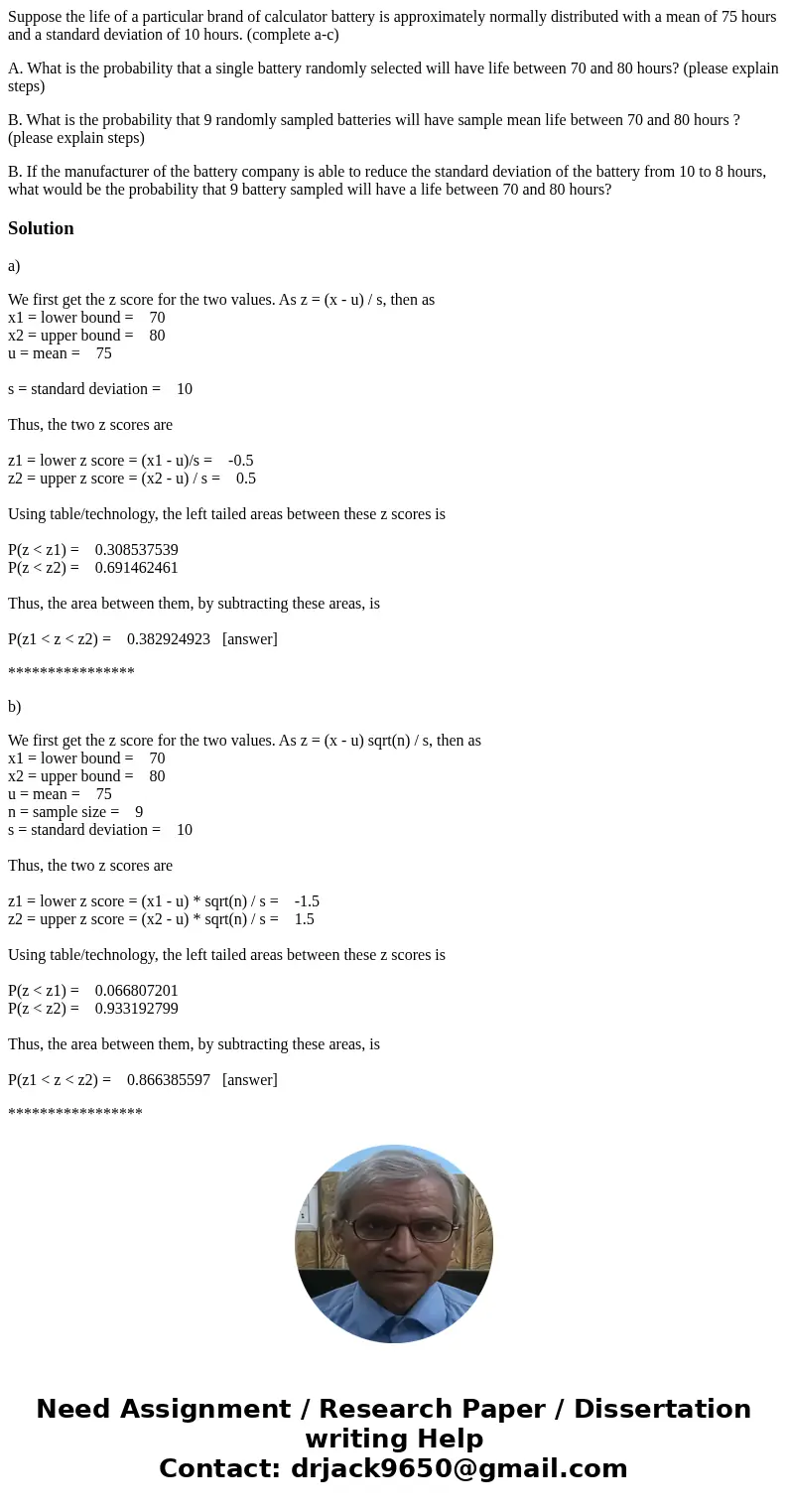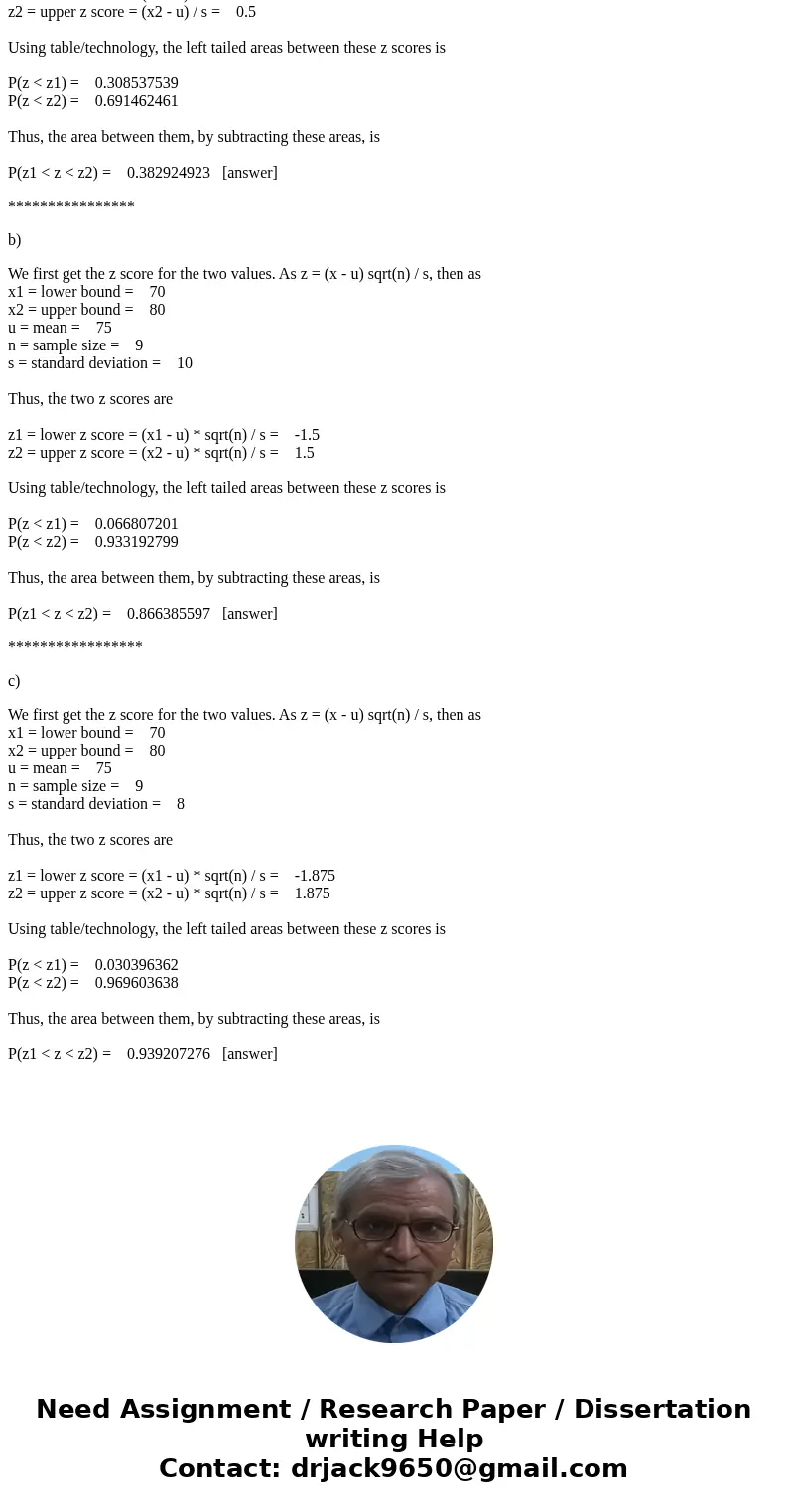Suppose the life of a particular brand of calculator battery
Suppose the life of a particular brand of calculator battery is approximately normally distributed with a mean of 75 hours and a standard deviation of 10 hours. (complete a-c)
A. What is the probability that a single battery randomly selected will have life between 70 and 80 hours? (please explain steps)
B. What is the probability that 9 randomly sampled batteries will have sample mean life between 70 and 80 hours ? (please explain steps)
B. If the manufacturer of the battery company is able to reduce the standard deviation of the battery from 10 to 8 hours, what would be the probability that 9 battery sampled will have a life between 70 and 80 hours?
Solution
a)
We first get the z score for the two values. As z = (x - u) / s, then as
x1 = lower bound = 70
x2 = upper bound = 80
u = mean = 75
s = standard deviation = 10
Thus, the two z scores are
z1 = lower z score = (x1 - u)/s = -0.5
z2 = upper z score = (x2 - u) / s = 0.5
Using table/technology, the left tailed areas between these z scores is
P(z < z1) = 0.308537539
P(z < z2) = 0.691462461
Thus, the area between them, by subtracting these areas, is
P(z1 < z < z2) = 0.382924923 [answer]
****************
b)
We first get the z score for the two values. As z = (x - u) sqrt(n) / s, then as
x1 = lower bound = 70
x2 = upper bound = 80
u = mean = 75
n = sample size = 9
s = standard deviation = 10
Thus, the two z scores are
z1 = lower z score = (x1 - u) * sqrt(n) / s = -1.5
z2 = upper z score = (x2 - u) * sqrt(n) / s = 1.5
Using table/technology, the left tailed areas between these z scores is
P(z < z1) = 0.066807201
P(z < z2) = 0.933192799
Thus, the area between them, by subtracting these areas, is
P(z1 < z < z2) = 0.866385597 [answer]
*****************
c)
We first get the z score for the two values. As z = (x - u) sqrt(n) / s, then as
x1 = lower bound = 70
x2 = upper bound = 80
u = mean = 75
n = sample size = 9
s = standard deviation = 8
Thus, the two z scores are
z1 = lower z score = (x1 - u) * sqrt(n) / s = -1.875
z2 = upper z score = (x2 - u) * sqrt(n) / s = 1.875
Using table/technology, the left tailed areas between these z scores is
P(z < z1) = 0.030396362
P(z < z2) = 0.969603638
Thus, the area between them, by subtracting these areas, is
P(z1 < z < z2) = 0.939207276 [answer]


 Homework Sourse
Homework Sourse